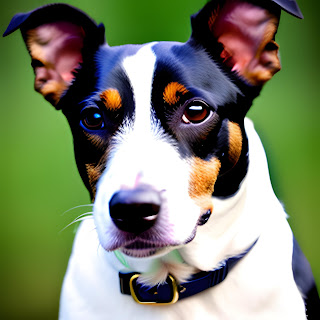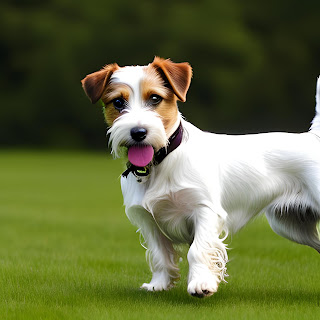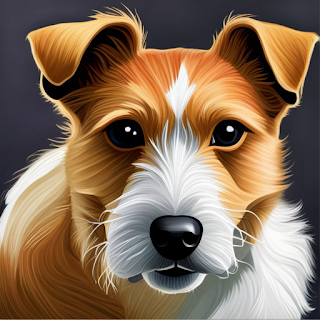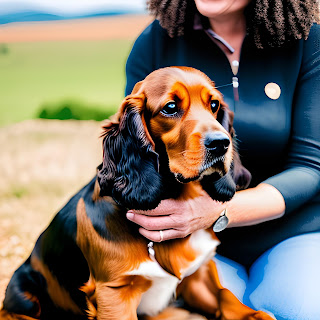A Spirited and Loyal Companion - Wire Haired Jack Russell Terrier
The Wire Haired Jack Russell Terrier is a small, energetic, and intelligent breed that has captured the hearts of dog lovers worldwide. With its unique appearance and spirited nature, this terrier breed is perfect for those seeking a loyal companion with a touch of adventure. In this article, we will explore the history, characteristics, and care requirements of the Wire Haired Jack Russell Terrier.
History of the Wire Haired Jack Russell Terrier
The Jack Russell Terrier traces its roots back to the early 19th century in England, where it was bred by Reverend John Russell to be a fearless fox hunter. The breed's primary purpose was to flush out foxes from their dens, allowing hunters to catch them more easily. The Wire Haired variety emerged as a result of crossbreeding with other rough-coated terriers to increase its weather resistance and enhance its hunting abilities.
 |
| Smooth Coat |
Wired hair Jack Russell and smooth coat Jack Russell are two different types of the same breed. The main difference between them is their coat. The wired hair Jack Russell has a rough, wiry coat that is longer and coarser than the smooth coat. On the other hand, the smooth coat Jack Russell has a short, smooth coat that is easy to maintain. Another difference is that the wired hair Jack Russell sheds less than the smooth coat Jack Russell. Both types have similar temperaments and are energetic, loyal, and intelligent dogs. When it comes to choosing between the two, it ultimately comes down to personal preference and lifestyle.
Physical Characteristics
The Wire Haired Jack Russell Terrier is a small, sturdy dog with an alert expression and confident demeanor. They typically weigh between 13-17 pounds and stand 10-15 inches tall at the shoulder. The breed's most distinctive feature is its rough, wiry coat, which provides excellent protection against harsh weather conditions and rough terrain. Coat colors can include white with black, tan, or brown markings.
Temperament
Wire Haired Jack Russell Terriers are known for their high energy levels, intelligence, and fearless nature. They are incredibly loyal to their owners and form strong bonds with their families. This breed thrives on mental and physical stimulation, making them excellent companions for active individuals or families with older children.
Training and Exercise
Due to their intelligence and desire to please, Wire Haired Jack Russell Terriers are generally easy to train. Early socialization and obedience training are essential to ensure a well-behaved pet. This breed has a high prey drive, so they may not be suitable for households with small animals such as cats or rodents.
Wire Haired Jack Russell Terriers require plenty of daily exercise to keep them mentally and physically stimulated. Long walks, hikes, or playtime in a securely fenced yard are ideal ways to keep your terrier engaged and happy. They also excel in dog sports such as agility, flyball, and earthdog trials.
Grooming and Care
The wiry coat of the Wire Haired Jack Russell Terrier requires regular grooming to maintain its weather-resistant qualities. Brushing at least once a week will help remove dead hair and prevent matting. Handstripping the dog's coat twice a year will help maintain its texture and appearance. Regular nail trimming, ear cleaning, and dental care are also essential for your terrier's overall health.
Health Concerns
The Wire Haired Jack Russell Terrier is generally a healthy breed with a lifespan of 13-16 years. However, like all breeds, they can be prone to certain health issues such as patellar luxation, deafness, and eye conditions like cataracts or glaucoma. Regular veterinary check-ups and preventative care can help detect and address any health concerns early on.
The Wire Haired Jack Russell and the Smooth Coat Jack Russell are two different breeds of the same family. Here are five differences between the two:
1. Coat: As the name suggests, the Smooth Coat Jack Russell has a smooth, short coat that lies close to their body, while the Wire Haired Jack Russell has a rough, dense coat that is wiry to the touch.
2. Grooming: Due to their different coats, grooming requirements vary between the two breeds. The Smooth Coat Jack Russell requires minimal grooming, while the Wire Haired Jack Russell needs regular brushing and trimming to maintain their coat.
3. Temperament: Both breeds are known for their energetic and playful nature, but the Wire Haired Jack Russell tends to be more independent and stubborn than the Smooth Coat Jack Russell.
4. Size: Both breeds are small in size, but the Wire Haired Jack Russell tends to be slightly larger and heavier than the Smooth Coat Jack Russell.
5. Health: Both breeds are generally healthy, but the Wire Haired Jack Russell is more prone to skin allergies and infections due to their dense coat, while the Smooth Coat Jack Russell is more prone to eye and ear infections due to their floppy ears and protruding eyes.
Conclusion
The Wire Haired Jack Russell Terrier is a spirited, loyal, and intelligent breed that makes an excellent companion for those who can keep up with their high energy levels. With proper training, socialization, and care, this terrier will be a loving and adventurous addition to any family.
.jpg)
.jpg)
.jpg)

.jpg)


.jpg)
.jpg)
.jpg)

.jpg)
.jpg)